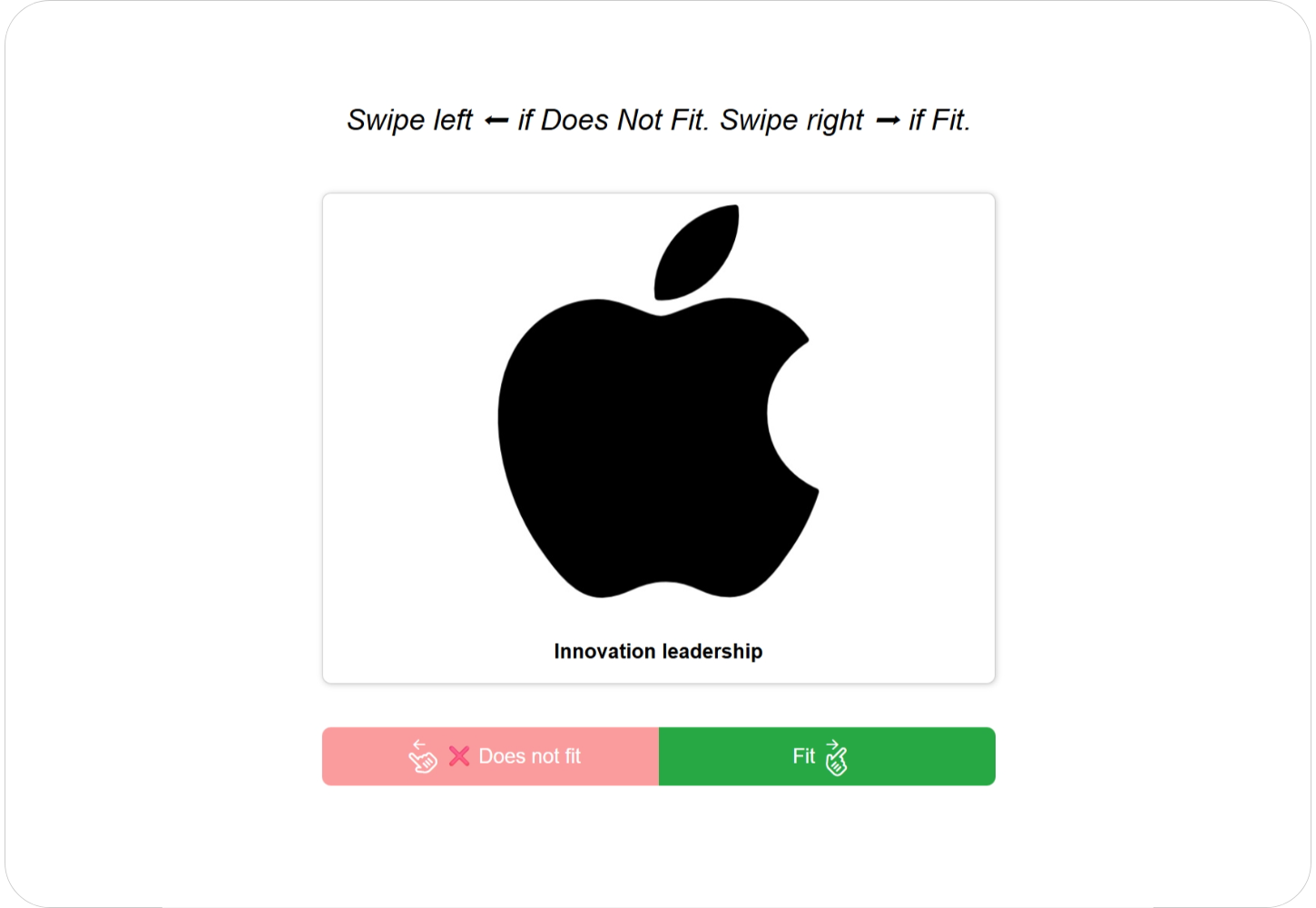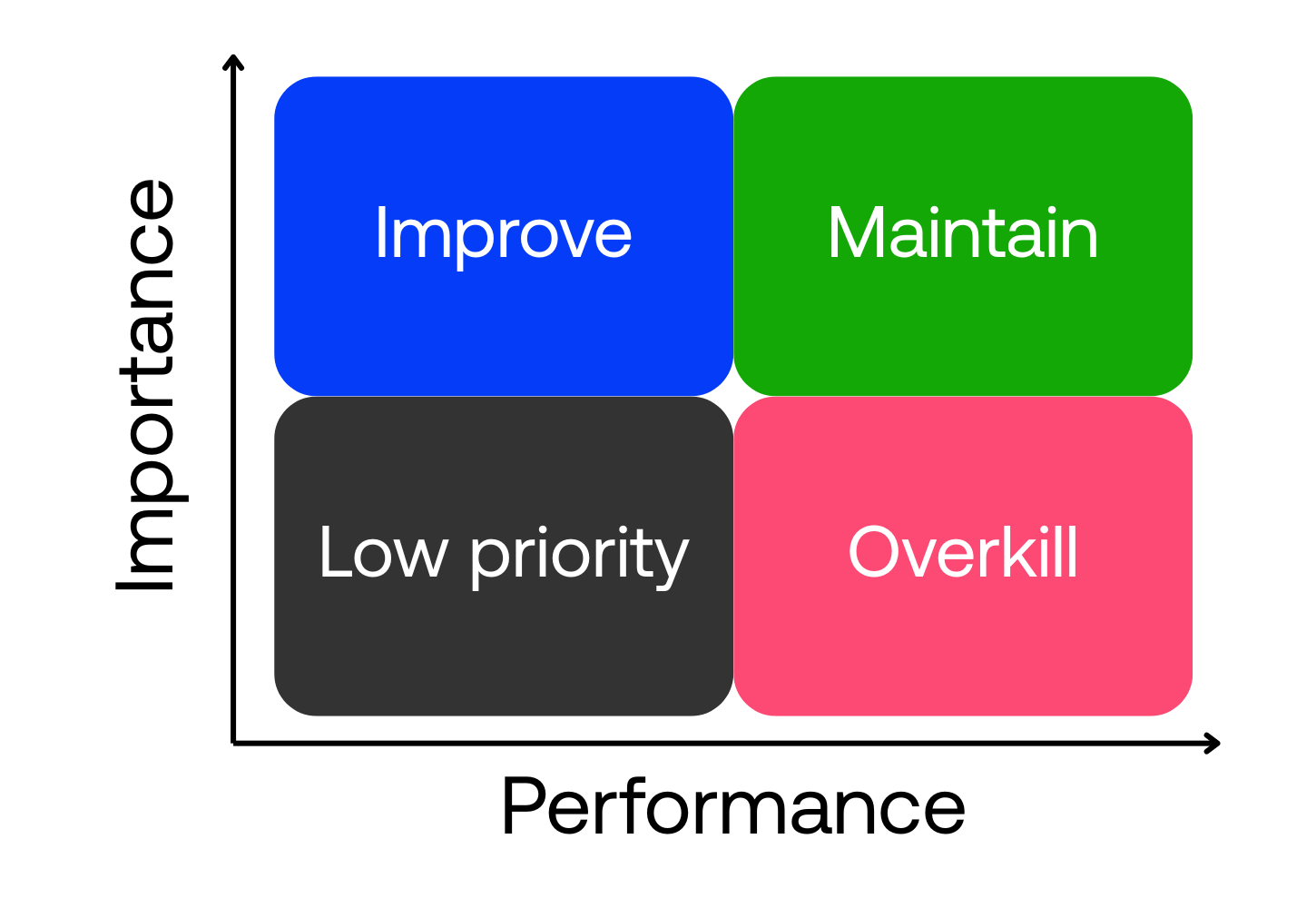Discover what implicit testing is, how it measures instant consumer reactions, and its key applications in market research.
Implicit testing
Measuring automatic consumer reactions toward products, brands, and marketing assets and associations through rapid response tasks.
When consumers hear “Just Do It,” many instantly think of Nike. The distinctive crack of opening a soft drink can often bring Coca-Cola to mind. These automatic, reactive associations happen almost instantly, and consumers typically can’t explain why and how it happened.
Studies across psychology, neuroscience, and consumer behaviour have discovered that there are automatic mental processes alongside conscious deliberation that influence judgement, behaviours, and decision-making.
This understanding led to the development of implicit testing methods that assess automatic responses, helping researchers understand how these instant reactions influence decision-making.
Dual-process models of decision-making
Human decision-making is extremely complex as there are multiple systems working together in our brains [1], with different mental processes handling different types of tasks [2].
Dual-process theory is one of the most widely adopted frameworks to understand these processes. Various dual-process models have been developed and appear throughout neuroscience (for comprehensive reviews, see Watson et al., 2022 [3]), psychology (Evans and Stanovich, 2013 [4]), management and organisation research (Keller and Sadler-Smith, 2019 [5]), public policy (Banerjee and John, 2021 [6]), behavioural economics (Grayot, 2019 [2]), and many more.
The fundamental idea underlying these models is that there are two main types of processing:
- Processes that are fast and intuitive, often described as gut feeling.
- Processes that are slow and deliberative, often described as rational thinking.
Researchers have used various terminologies across different models, such as automatic vs. controlled, experiential vs. rational, implicit vs. explicit, and many more [4]. These are also commonly referred to as System 1 and System 2, terms adopted and popularised by Nobel Prize winner Daniel Kahneman in “Thinking Fast and Slow”.
The following table outlines the key characteristics that distinguish these two processing systems:
| Key attributes | System 1 | System 2 |
|---|---|---|
| Processing speed | Operates rapidly and automatically, providing instant responses | Functions slowly and deliberately, requiring time for careful consideration |
| Cognitive effort | Requires minimal conscious effort and operates effortlessly | Requires mental energy and conscious attention |
| Decision approach | Relies on intuition and may be affected by past experiences | Involves systematic evaluation and logical reasoning |
| Emotional influence | Heavily influenced by emotions, feelings, and immediate context | Less susceptible to emotional bias and focuses on objective analysis |
| Common scenarios | Routine decisions, familiar situations, or time-pressured contexts | High-stakes decisions, unfamiliar situations, or complex problems |
While researchers recognise the importance of studying both systems, measuring System 1 processes present unique challenges. Any direct questioning would cause participants to engage conscious thoughts, moving away from the automatic responses that researchers are trying to measure. To capture these rapid, instinctive reactions without interference, researchers developed indirect methods known as implicit testing [7].
A brief history of implicit testing
The roots of using reaction time to measure automatic processes stretch back to the 1980s when researchers began assessing social attitudes, particularly attitudes that people either couldn’t recognise in themselves or were reluctant to admit, such as prejudices and stereotypes [8].
In 1998, three Harvard University researchers published the seminal Implicit Association Test (IAT) [9]. It is a computer test that reveals automatic thoughts by measuring how quickly people responded to different word and image combinations. This approach is based on two key principles of how human minds process information.
Firstly, when people encounter any word or image, everything they associate with it becomes activated in their memory regardless of whether they are consciously aware of these connections or not. This mental activation, called priming, makes related concepts come to mind more quickly and easily.
Building on this, people recognise words or images faster when they’ve been primed by something they mentally associate with it. This means reaction speed becomes a reliable measure of how strongly two concepts are linked in someone’s mind. The stronger the association between concepts, the faster the reaction time. Conversely, weaker or conflicting associations result in slower responses.
Implicit association tests were then widely adopted in consumer research [10], expanding into commercial applications as businesses, particularly marketing and advertising communities, recognised their ability to uncover how consumers automatically sort, categorise, and link concepts in their minds.
Implicit testing in market research
In market research applications, implicit testing examines consumers’ automatic responses to brands, products, or advertisements. The approach taps into System 1 thinking, revealing how consumers instinctively categorise and evaluate commercial stimuli.
The methodology typically uses rapid response tasks. Participants view brand logos, products, or ads paired with attribute words like “premium”, “affordable”, or “innovative.” They quickly indicate whether they associate each attribute with what they see by pressing designated keys or buttons. The system measures both their answers and reaction times. Faster responses reveal stronger automatic associations embedded in consumers’ minds. However, these strong associations can be either positive (the attribute strongly fits the brand) or negative (the attribute strongly does not fit the brand).
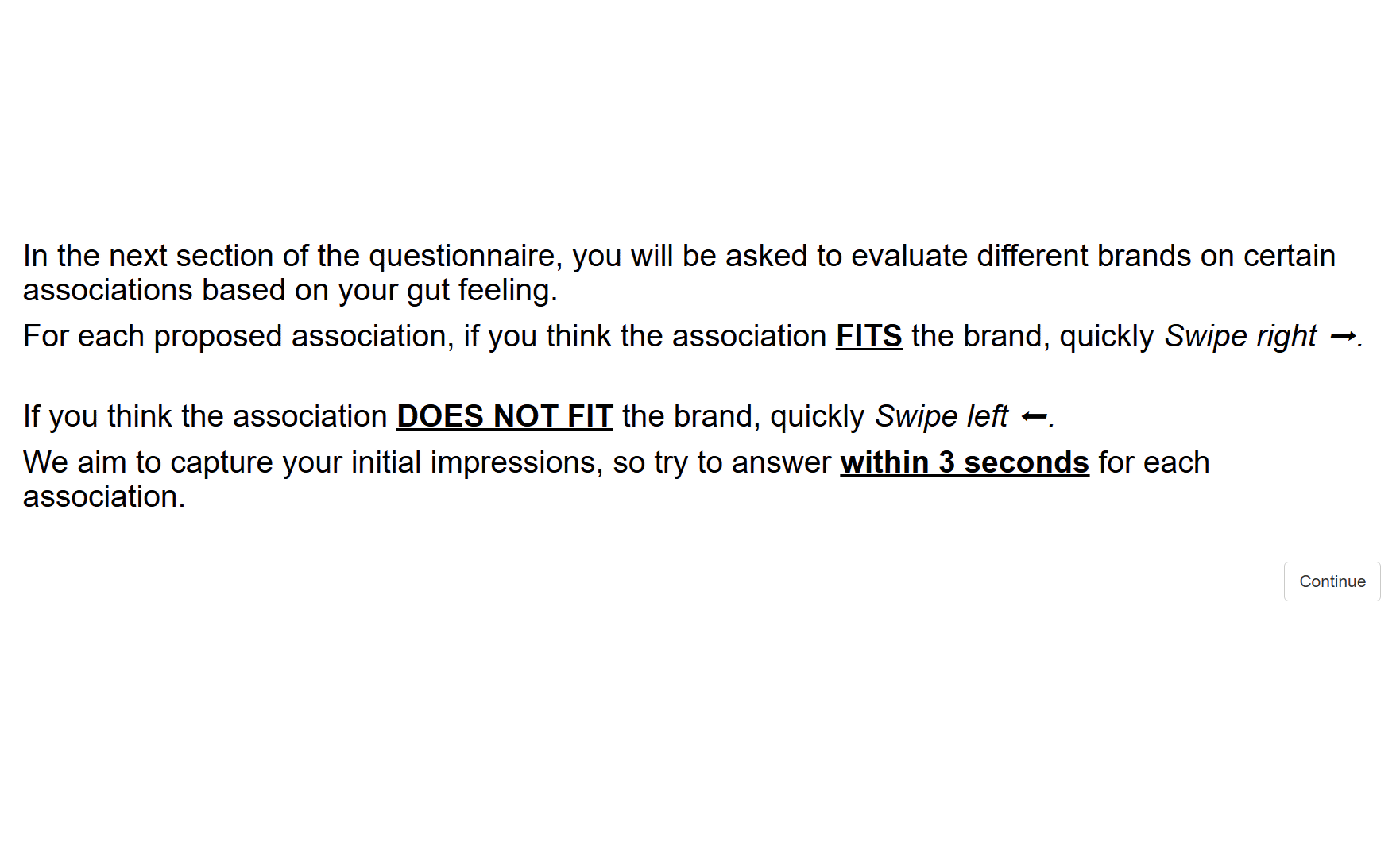
You can try this quick demonstration to experience the rapid response task yourself.
Implicit testing excels at understanding the instant reactions at the moment consumers encounter your brand, product, or advertisement. It also provides valuable insights when consumers’ stated preferences don’t align with their final choices, or when they struggle to articulate why they prefer a certain brand over others. Here are the primary applications where implicit testing offers meaningful insights:
Product concept and design evaluation
The millisecond impressions consumers form during their first glance at your product may make the difference between being chosen or ignored on crowded shelves.
Implicit testing helps reveal the automatic associations that drive these split-second decisions by showing how instantly consumers associate your product design with specific qualities like “premium”, “trustworthy”, or “appealing.”
Some example research questions may include:
- Which concept variations trigger the fastest positive recognition among different consumer groups?
- How do consumers instantly categorise your concept relative to competitors’ products?
- Which usage occasions does your product or design automatically associate with, e.g. everyday routines, special celebrations, or emergency situations?
- What unconscious barriers exist, i.e. does the concept or design inadvertently signal “confusion”, “too expensive”, or “scepticism”?
The following example shows net reaction times for product-attribute associations across four fragrance products. Values toward the right indicate stronger associations where participants quickly recognized the attribute fits the product, while values toward the left show weaker associations where participants took longer to decide or were less certain about the fit. Citrus Bloom demonstrates the strongest associations with “Fresh” and “Youthful,” while Vanilla Rose performs well with “Romantic” and “Evening” attributes. Spiced Orchid shows weaker overall associations across most attributes.
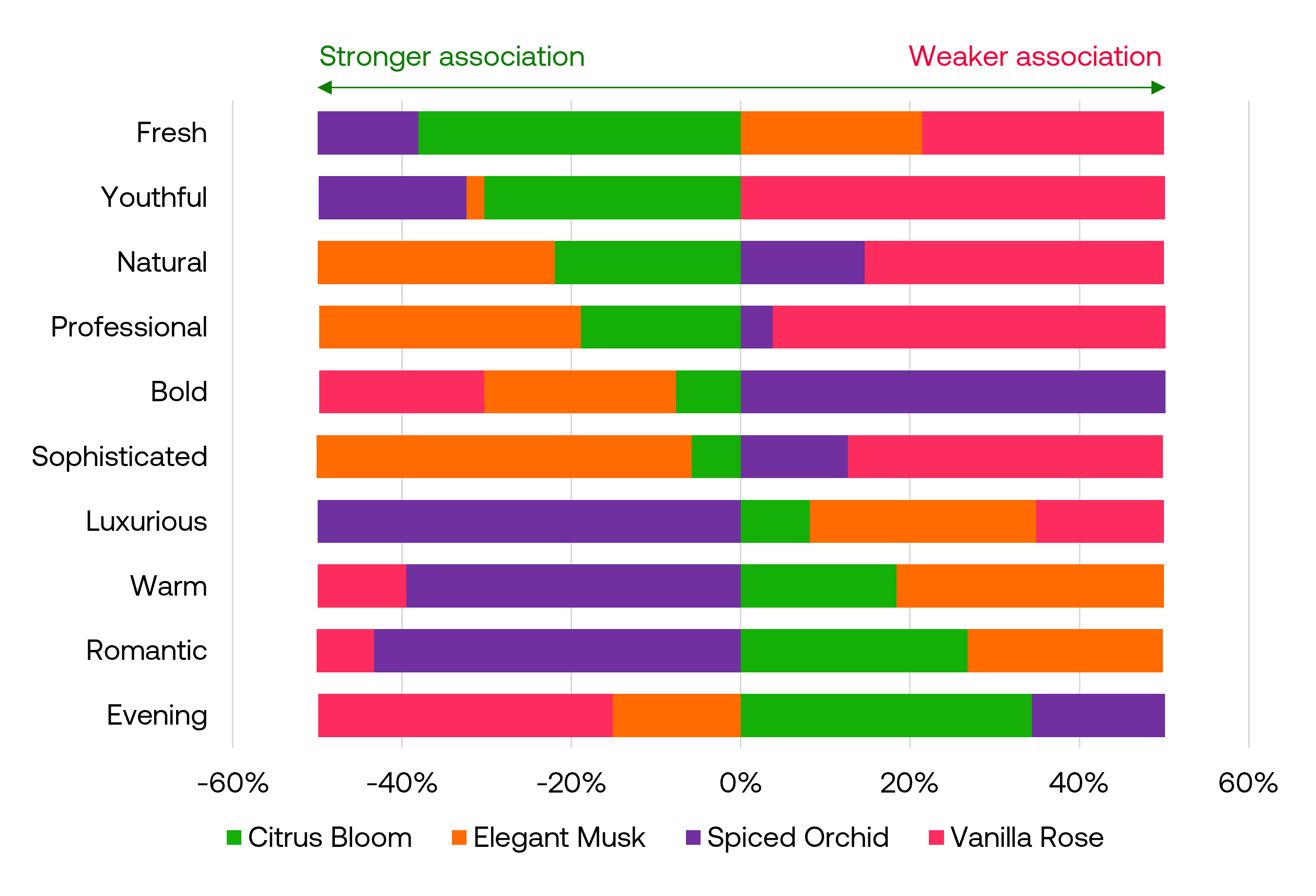
Advertising and creative testing
In today’s over-saturated media landscape, advertisements have only first few seconds to make an impact before consumers scroll past or tune out. Implicit testing examines what happens in those critical first moments of exposure, providing you insights to optimise campaigns for maximum breakthrough in crowded media environments.
Some example research questions may include:
- Which advertisements generate the fastest emotional engagement across different target segments?
- How quickly do consumers connect your advertisement to the intended brand versus confusing it with competitors?
- What actions does your advertisement instantly trigger, e.g. share, ask for more info, or purchase?
- Do your advertisements unintentionally build negative associations you didn’t intend?
The following example shows implicit association scores comparing Apple to other brands across various attributes. The left panel displays raw association strengths for Apple and other brands, while the right panel shows Apple’s advantage or disadvantage relative to competitors. Respondents associate Apple most strongly with “Expensive”, “Appealing”, and “Distinctive”. However, Apple shows weaker associations with “Persuasive”, “Relatable”, and “Trustworthy” compared to competitors.
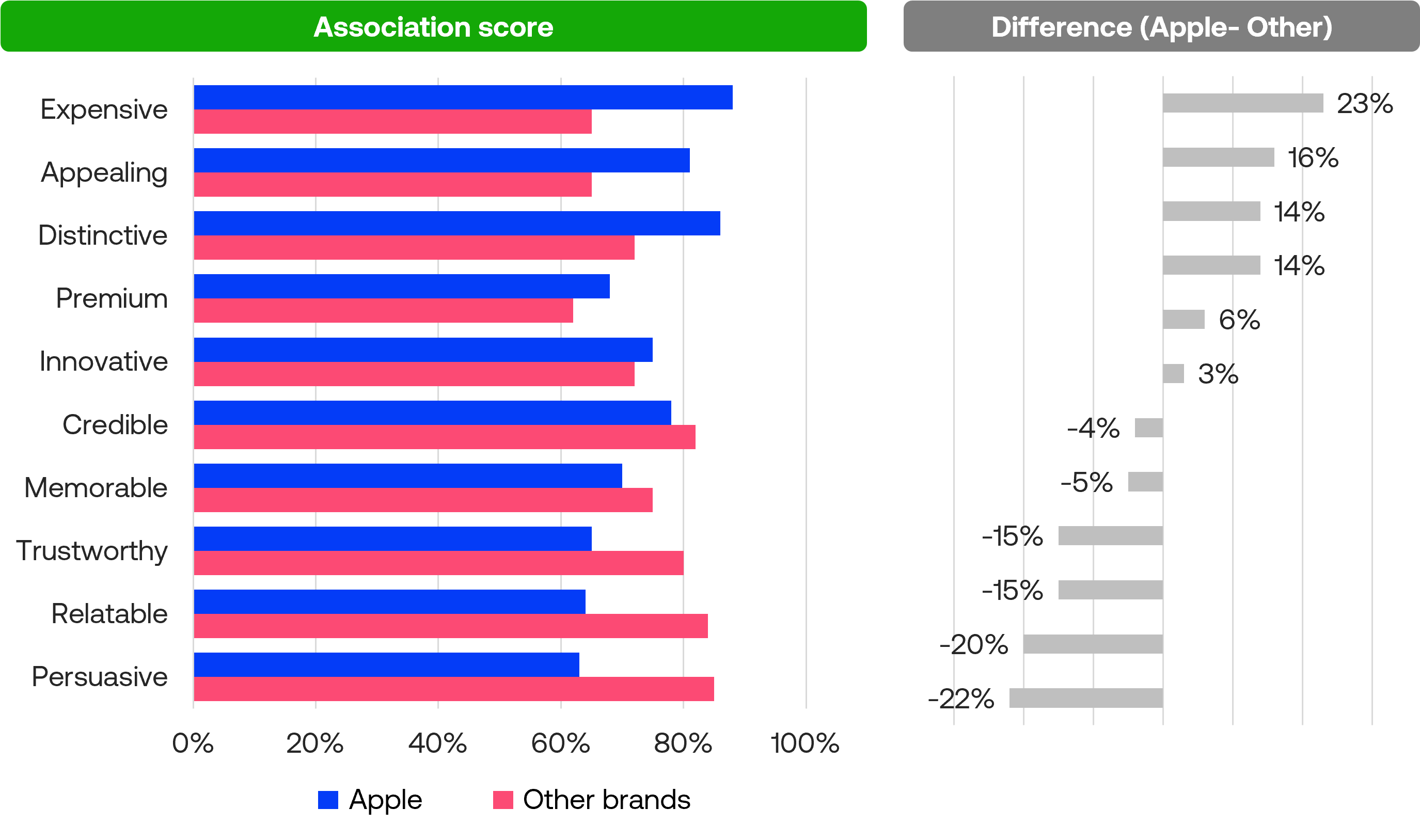
Brand positioning and competitive analysis
The strongest brand positions exist as automatic mental shortcuts in consumers’ minds. When they think “premium coffee” or “reliable cars”, certain brands come to mind first.
Implicit testing maps these automatic brand associations, revealing how your brand is actually positioned versus how you intend it to be positioned. This helps identify opportunities to strengthen your current position or claim untapped mental territories that drive brand selection.
Some example research questions may include:
- What consumer needs does your brand instantly connect with versus needs that belong to competitors?
- How quickly does your brand come to mind for key category benefits compared to established competitors?
- Which brands are consumers unconsciously comparing you to when making purchase decisions?
- What gaps exist between your intended positioning and the automatic associations consumers actually hold?
The following example plots association strength versus reaction time for Apple and competitors across four quadrants. The four quadrants represents four distinct types of associations: strong positive associations appear in the top-right (high fit, quick responses), weak positive associations appear in the bottom-right (high fit, slower responses), strong negative associations appear in the top-left (low fit, quick responses), and weak negative associations appear in the bottom-left (low fit, slower responses).
Apple demonstrates strong positive associations with “Premium quality” and “Prestige brand”, while showing strong negative associations with “Value for money” and “AI-powered”. Other brands show stronger positive associations with “Innovation leadership” and more mixed patterns across other attributes.
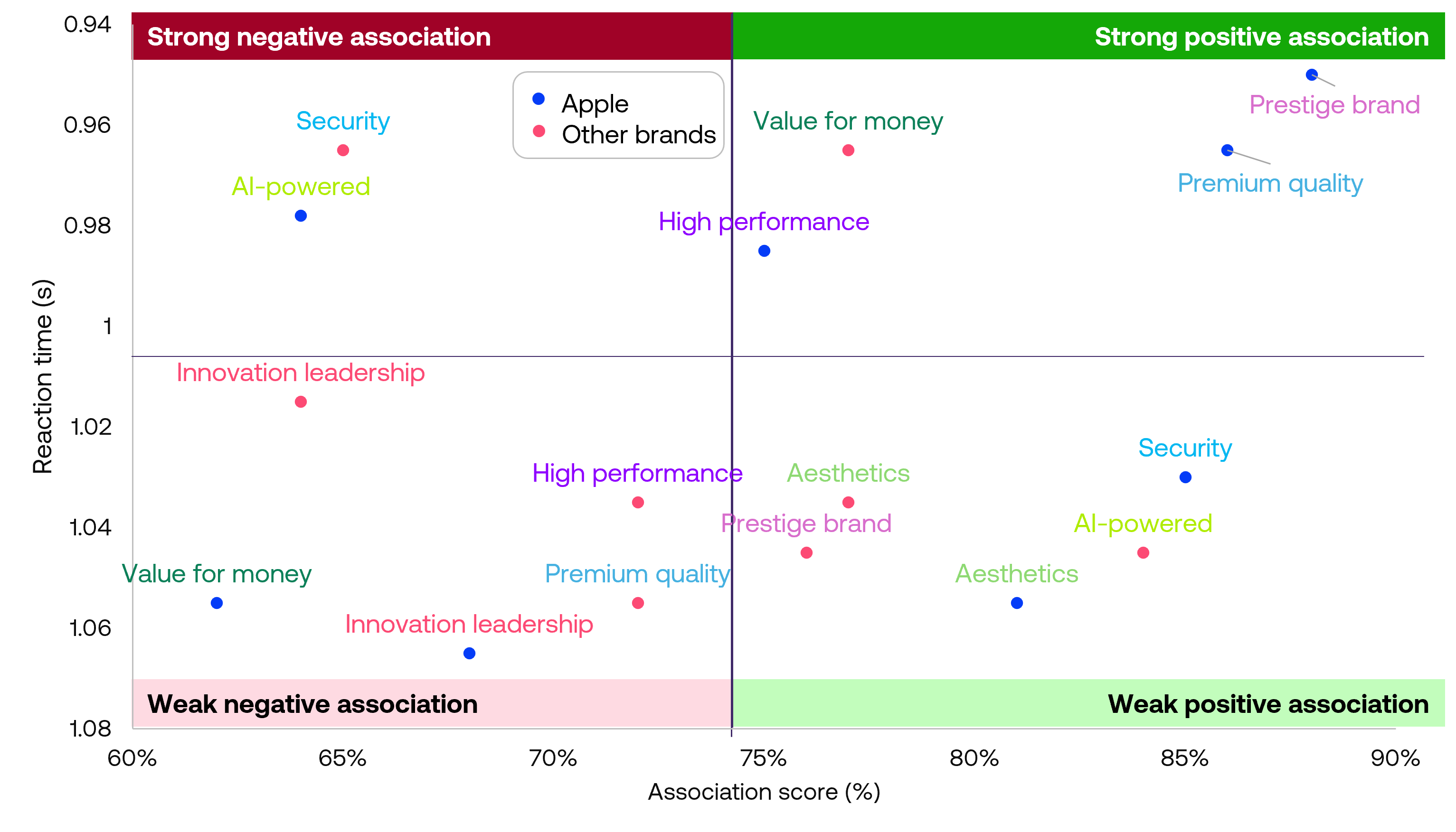
Uncover your consumers’ automatic reactions
The split-second judgements consumers make about your brand, products, and communications are happening whether you measure them or not. The question is whether these automatic reactions are working in your favour or quietly undermining your efforts.
If you’re interested in exploring what your customers are automatically thinking and feeling when they encounter your brand, schedule a free consultation today to discuss implicit testing applications specific to your needs.
References
[1] Dual-process theories of decision-making: A selective survey, Isabelle Brocas and Juan Carrillo, 2014, 41: 45–54.
[2] Dual Process Theories in Behavioral Economics and Neuroeconomics: a Critical Review, James Grayot, 2019, Review of Philosophy and Psychology, 11: 105-136.
[3] Making habits measurable beyond what they are not: A focus on associative dual-process models, Poppy Watson, Claire O’Callaghan, Iain Perkes, Laura Bradfield, and Karly Turner, 2022, Neuroscience & Biobehavioral Reviews, 142.
[4] Dual-Process Theories of Higher Cognition: Advancing the Debate, Jonathan Evans and Keith Stanovich, 2013, Perspectives on Psychological Science, 8: 223-241.
[5] Paradoxes and Dual Processes: A Review and Synthesis, Josh Keller and Eugene Sadler-Smith, 2019, International Journal of Management Reviews, 21: 162-184.
[6] Nudge plus: incorporating reflection into behavioral public policy, Sanchayan Banerjee and Peter John, 2021, Behavioural Public Policy, 8: 69-84.
[7] Unravelling the intellectual discourse of implicit consumer cognition: A bibliometric review., Philipp Wörfel, 2019, 61.
[8] Implicit social cognition: attitudes, self-esteem, and stereotypes, Anthony Greenwald and Mahzarin Banaji, 1995, 102:4-27.
[9] Measuring individual differences in implicit cognition: The implicit association test, Anthony Greenwald, Debbie McGhee, and Jordan Schwartz, 1998, 6:1464-1480.
[10] Predictive Validity of the Implicit Association Test in Studies of Brands, Consumer Attitudes, and Behavior, Dominika Maison, Anthony Greenwald, and Ralph Bruin, 2004, 14:405-415.
